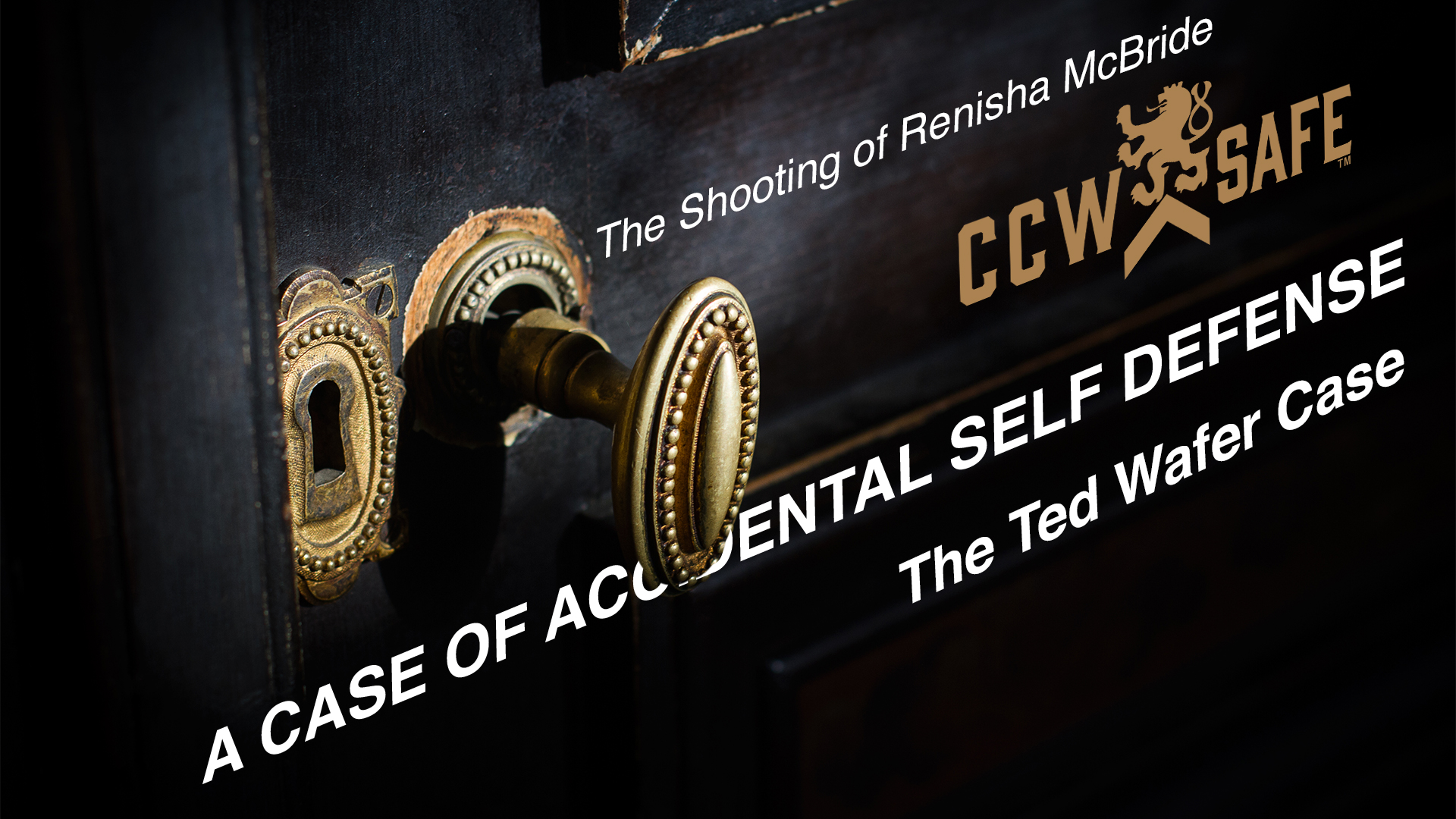
Posted on April 12, 2018
The Accidental Case of Self Defense- The Shooting of Renisha McBride
The Shooting of Renisha McBride
A case of ‘accidental self-defense’
Part 1: The Facts of the Ted Wafer Case
Ted Wafer, a 54-year-old airport maintenance worker, fell asleep in front of the television in his Dearborn Heights home on the night of November 1, 2013. He lived alone in the house he had purchased in 1994. The intervening twenty years had seen many changes to the Detroit suburb — including a rising crime rate. In the middle of the night (around 3:45 am), loud banging startled Wafer out of his sleep. The noise came first from the side door, then from the front door. It was a “boom, boom, boom pounding” his lawyer Cheryl Carpenter told jurors at trial. “The floor was shaking.”
Carpenter claims Wafer couldn’t find his cell phone at first; it was in his pants pocket, hanging from the bathroom door. He turned off the television and the lights and looked out the peephole to the front door and saw a “shadowy figure.”
“His heart was coming out of his chest,” Carpenter told the jurors. “He thinks it is not one person; it is two or more people.” She said Wafer was “a man under siege in his own home.”
“It was them or me,” Wafer testified. “I wasn’t going to cower in my house.”
Wafer retrieved his pistol-grip Mossberg 12 gauge shotgun, and he opened the front door. As the door opened, the shadowy figure began to push through the locked screen door. A shot went off, striking the intruder in the head.
After the shooting, Wafer found his cell phone, and he called 911. His demeanor is cold and detached on the recording. “I just shot somebody on my front porch with a shotgun banging on my door,” he said. He hung up while the operator was asking questions.
When police arrived, Wafer was cooperative and answered their questions without advice from a lawyer. “I didn’t know there was a round in there,” he told detectives. He claimed the shooting was an accident. This would become very important at trial.
The intruder, who lay dead in a pool of her own blood on Wafer’s front porch when police arrived, was 19-year-old Renisha McBride, a former cheerleader and recent graduate of Southfield High School. Earlier in the evening, McBride had been playing drinking games with a friend and smoking marijuana. Toxicology reports put her blood alcohol levels at .22, about three times the legal limit for driving.
A few hours before the shooting, McBride crashed her car into a parked vehicle, likely sustaining a head injury. A witness who called 911 reported that McBride seemed “discombobulated” and was wandering around after an accident. By the time paramedics arrived, McBride had left the scene on foot. What McBride did during the intervening hours remains a mystery, but prosecutors speculated that when she arrived at Wafer’s house, she was confused and looking for help.
Immediately following the shooting, McBride’s family called for Wafer’s arrest. In the wake of the not-guilty verdict in the George Zimmerman trial that summer, the fact that McBride was black and Wafer was white drew national media attention. When Wayne County prosecutors ultimately filed second-degree murder charges, gun rights advocates demanded that the Castle Doctrine should have protected Wafer from prosecution.
In our series The Four Elements of Self-Defense, we explore high-profile self-defense cases, looking for lessons for the concealed carrier or gun owners concerned with home defense. The Castle Doctrine gives a resident broad latitude when using deadly force to protect their home from an intruder, but as we have learned with the Marcus Kaarma and Byron Smith cases, there are limits to the Castle Doctrine.
In those cases, the shooter’s legal defenses unraveled because there was substantial evidence that the men lured the intruders into their homes with the intent of extracting revenge for previous break-ins. We declared that there is no such thing as “premeditated self-defense.”
Ted Wafer’s case, on the other hand, might be described as a case of “accidental self-defense.” When Wafer claimed to investigators that he didn’t think the shotgun was loaded, he suggested the shooting was an accident. The problem his attorney faced in court is that self-defense is an affirmative defense, meaning the use of deadly force is purposefully used to prevent imminent harm or death. A claim that an act of self-defense was “accidental” opens the shooter to manslaughter-charges. In Wafer’s case, when combined with other serious mistakes he made, his claim that the shooting was an accident helped seal his conviction on second-degree murder charges.
In our next installment of The Four Elements of Self-Defense, we’ll look at the impact the location of the shooting had on arguments at trial.

Shawn Vincent- Litigation Consultant
Shawn Vincent is a litigation consultant who helps select juries in self-defense cases, and he manages public interest of high-profile legal matters. If you have any questions for Shawn, or would like more articles like this, let us know below!